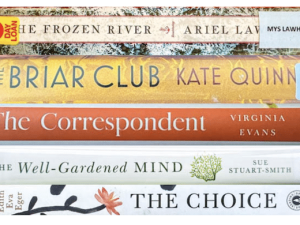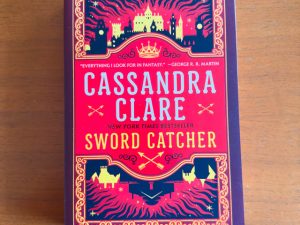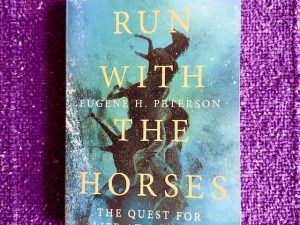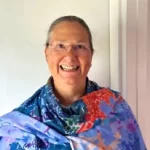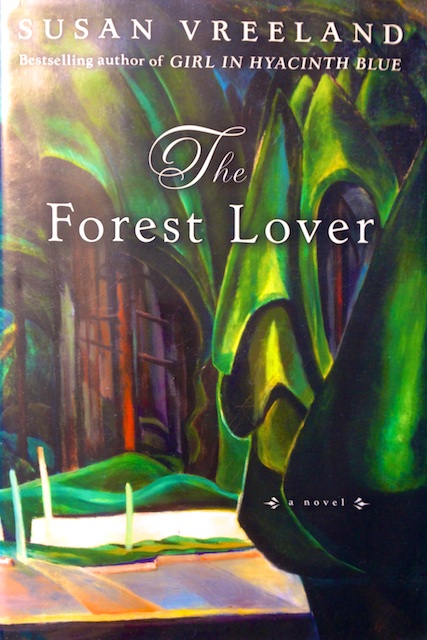
–
This book is historical fiction of Emily Carr, a remarkable woman painter, who despite her confining Victorian upbringing traveled to Paris to study with Post Impressionists and returned to her cherished northwest Canada to paint the forests and native artifacts. Her paintings are distinctly modern with abstract sensibilities unusual for her time. They were initially reviled locally, but within her lifetime found their appreciation in Canadian national galleries, and among her famous peers in the Canadian Group of Seven.
I enjoyed reading about her artistic inspirations, struggles, and victories, as well as her moral and spiritual perspective. She had to learn that exhibits didn’t make her an artist, but continuing to paint did. These were my favorite parts of the book.
Because it mattered so much to her, a sub-plot to this story is the devastation of the indigenous people whose disappearing lifestyle she was recording. And despite having prim, proper sisters, Emily Carr is so lonely that she makes some interesting friends, whose troubles also play roles here.
All that makes for a rather meandering story that gets bogged down enough that I can only give it 4 stars. It did, however, make me more interested in Emily Carr, and I’ve enjoyed googling her images as they were mentioned in the book. I have also put her own writing, Klee Wyck on my wish list, having not known of it before.
Despite it’s slow pace and unnecessary detours, I liked this book, partly because of nuggets in the writing like shown below:
- “Blend the colors to show curvature.”
- “Those hue changes are what gives it shape… The difference wasn’t in the lightness or the darkness of the stone but in its actual hue.”
- “The brushwork left visible. Ridges of paint following the direction of the stroke which followed the object’s shape. Figures and objects outlined in black. The viewpoint never fixed. The essential exaggerated and the unimportant vague.”
- “The violin sounds became visible in orange, red, violet, and with the deep opacity of oil… Unmixed daubs of pigments swam before her– Prussian blue trees, screaming orange faces, smeared vermillion skies. Was she awake or asleep?”
- “Simplify your forms and you’ll see repetitions within that composition… That will give you rhythm… Rhythm, that’s the thing.”
- “Art isn’t something a person does. It’s something he is. And you are. Let go your worries a mite.”
- “To drench herself in apricot, tangerine, pomegranate, apple green, as fruit refreshes the tongue, that would cure her.”
- “Her brush strokes would have to be broken touches – green wisps, blue patches, red and violet daubs, yellow highlights – all to depict light bouncing off water… In this light the water assumes so many colors. Same with the shadows. They take on the hue opposite to them.”
- “Are those shadows warmer or color than the earth? Cooler…Greens and blues…Just as if the poplars and sky were spread against the earth… Train your eyes to recognize color instead of objects…. Don’t be afraid to exaggerate.”
- “Art isn’t reproducing visual facts. It’s the difference between perception and conception.”
- “You can’t do both. Express yourself and record them accurately. You need to decide which is more important.”
- “Work fast like you’re painting in a storm. It frees the passion. Try it. Think hard before you begin, then enter the work… Move within it and don’t stop. Like a dance. Don’t intellectualize. Let your instincts direct you. … Deliberately slip into a consciousness which reduces the scene to geometric shapes and planes.”
- “You don’t need a teacher. You just need to paint.”
- “You are a hailat. Person with spirit power in your hands.”
- “the pain of the unexpressed”
- “Forget recognition. Paint because you love it, because you know your work is vibrant and strong and meaningful.”
- “If there is anything I believe… it’s that everything can grow. Nothing can kill the force that splits rocks to let a tiny seedling through.”
- “That’s one thing she could grasp about God –His aloneness.”
- “One thing she knew: it wasn’t the incoming of love that mattered, but the outgoing.”
- “Has it occurred to you that to clutch at life fearfully, unwilling to spend it, is not a form of gratitude to God for life?”
- “I think I’m beginning to glimpse how to see ideas instead of mere things.”
- “How can we think that other things pressing in on our lives excuse us from gratitude?”
- “I think recognizing the good must be the remedy for every woe.”
- “Do you like better to paint or to feel communion? They are the same. Art and Nature and God, all one, indistinguishable.”
- “Maybe rubbing our sandpaper selves against each other has been good, has worn down some rough spots to make us smoother.”
- “If she could sing like a thrush, what would she sing? She would sing the forest eternal.”
- “There is something bigger than fact:the underlying spirit.”
If you’re curious about or interested in Emily Carr, you may enjoy this book.
–

1 Comment
Pingbacks
-
[…] habits Super Better (review pending) A book about an artist Forest Lover (about Emily Carr) (four star review here) A how-to book The Pastel Book (middling) A book where you learn something new Seven Brief […]
